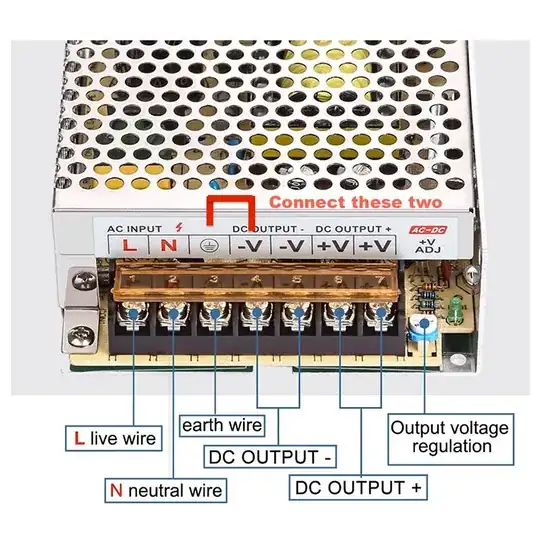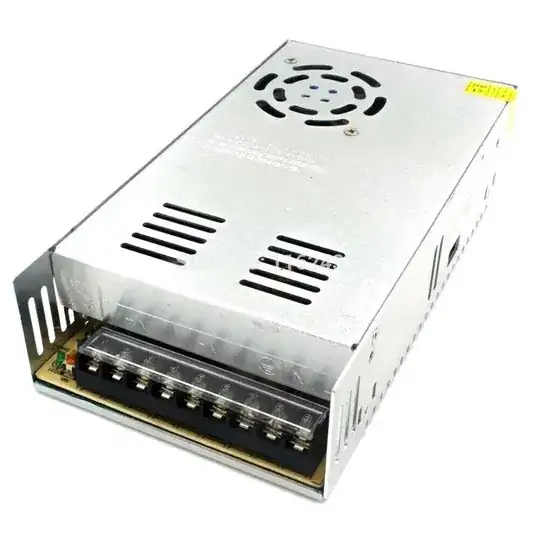TL; DR
You could try, powering off and connecting the V- to the AC Earth (either with, or without, a 100 Ω resistor - although the use of resistor would be preferable).

Then switch the PSU on to see if:
- First, the PSU doesn't short and explode (this is rather unlikely, but you never know), and;
- Second, the mild shocking that you experience has stopped. If it has stopped, then all well and good. If it hasn't, then power off and remove the connection (as it would seem pointless).
Personally, this is what I would try... and then get a replacement PSU anyway, when funds allow.
Notes
It's obviously a dodgy earth/ground but without seeing inside, it might be difficult to determine exactly what the issue is.
Some of these LED power supplies are notoriously badly fabricated and there may be a poorly soldered connection inside, loose conenction, or a faulty part.
It is probably easily remedied, if you know what to look for... but not so easily fixed if you don't. I've had a lot of these LED PSUs in the past and some are fixable, some not. Normally the output faisl and just the power transistors need replacing. I haven't come across one which shocks me yet, though, so I couldn't say what the issue is (likely to be), apart from a bad ground.
If you think you could manage it, open it and check for bad ground/earth connections. If you don't feel confident, then, seeing as they are relatively cheap so, maybe obtain another PSU from a different source/manufacturer and try that one instead.
If you do open it up, remember to disconnect from the mains supply..!
To be honest, it sounds like a dodgy unit, but... As a sanity check: Does the wall socket that you are plugging into actually have an Earth connection. I have a rented flat (in SE Asia), that has "three-hole" wall sockets, but the earth isn't actually earthed, and I'm constantly getting shocks from everything. As a shoddy workaround, you could connect the earth to the plumbing (if you have metal pipework), to get a good earth... However, seeing as the unit is detective, then this could result in a shocking shower... so not advised!!!.
I can't help thinking that this could be quite a serious issue, and that (in the absense of a definitive answer here) maybe you should ask, or look, on SE.Electrical Engineering.
Further reading
Should I ground the DC output negative terminal to the chasis on my 12 volt project?, in particular, this answer (but all of the answers are both informative and worth a read).

